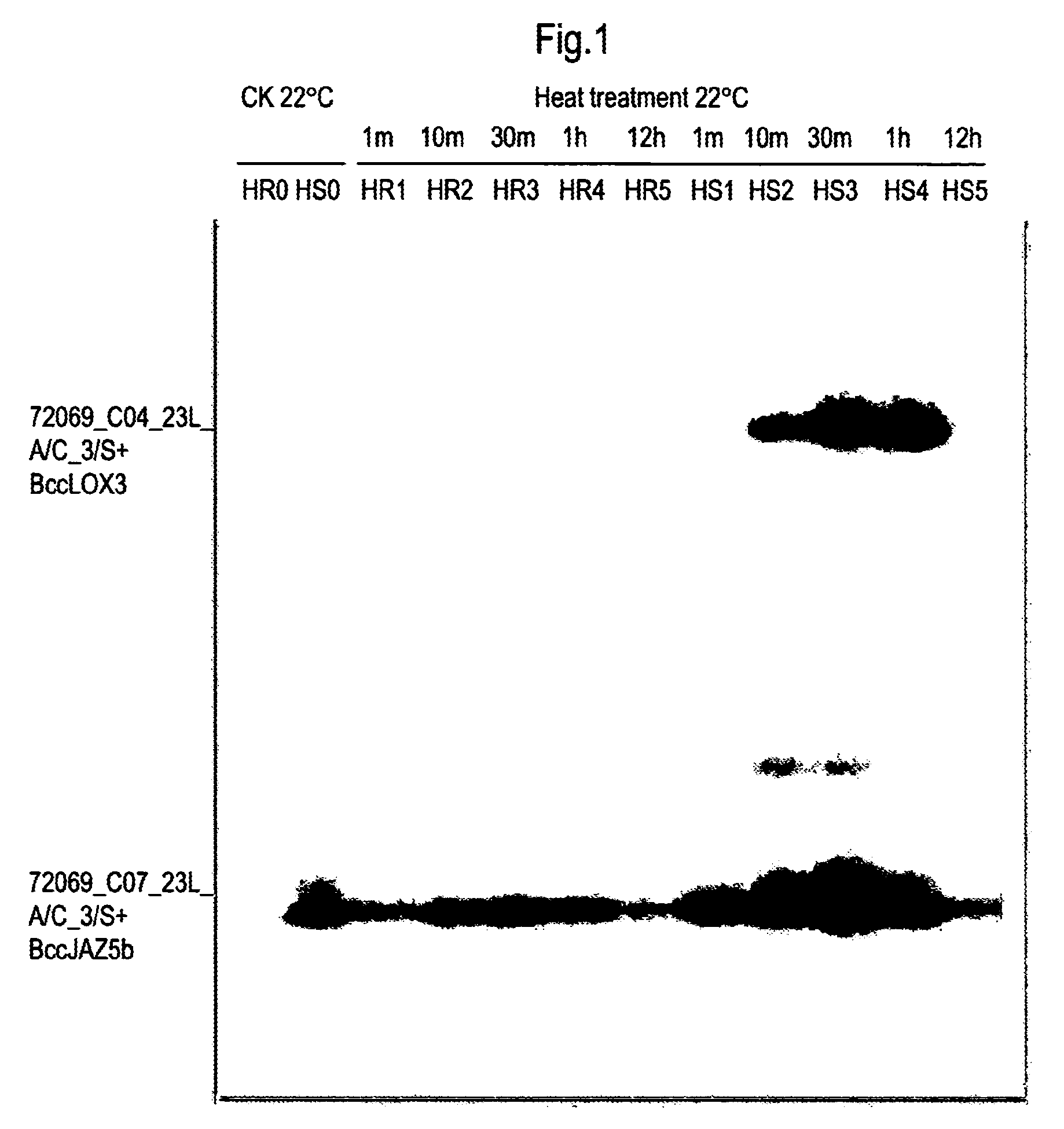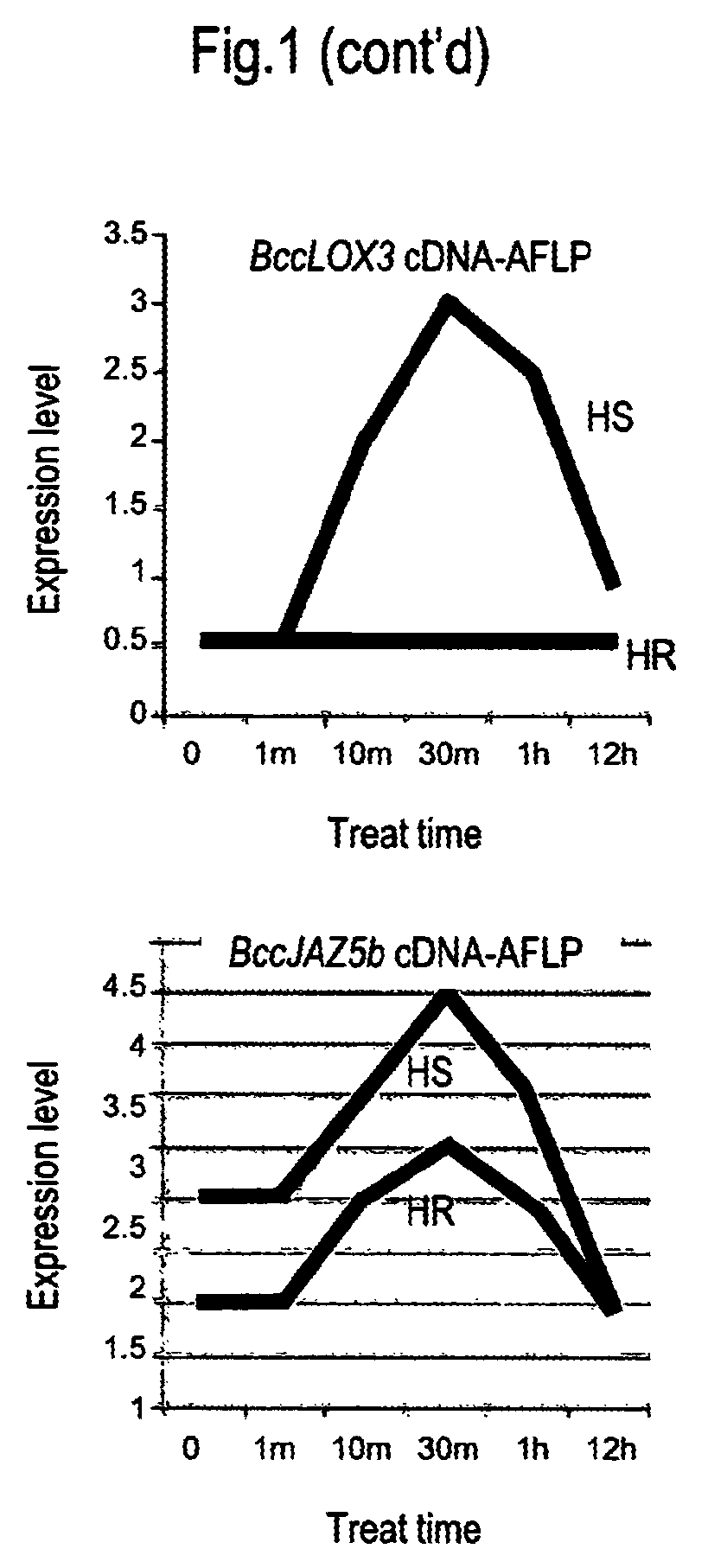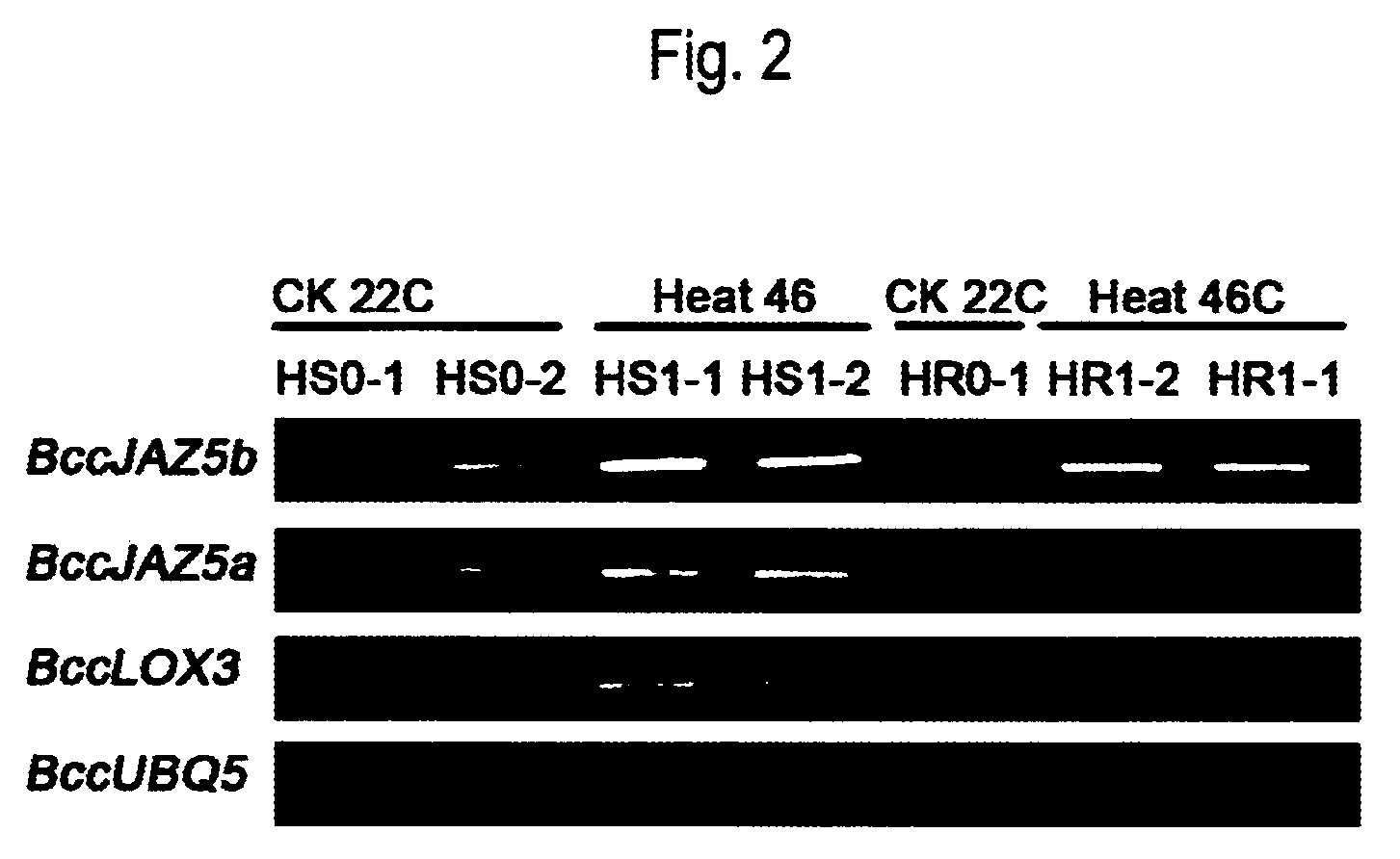Plant heat-resistance gene JAZ5A and use thereof
a plant heat resistance and gene technology, applied in the field of biotechnology and botany, can solve the problems of reducing the yield of plants, affecting the growth rate of plants, and affecting the quality of plants, and achieve the effect of enhancing the expression of the jaz5a gene in plants and/or plant products, and increasing crop yields
- Summary
- Abstract
- Description
- Claims
- Application Information
AI Technical Summary
Benefits of technology
Problems solved by technology
Method used
Image
Examples
example 1
Obtaining the Gene of Interest
[0183]Gene expression, especially functional genes' expression, in plant is temporally and / or spatially specific. The inventors detected the expression of functional genes in Brassica campestris L. ssp. chinensis specimens under different heat treatment conditions by hybridizing mRNAs extracted from specimens having been subjected to different heat treatments with a chip presenting all of the functional genes in Brassica campestris L. ssp. chinensis. Conventional methods for detecting gene expression require a large scale of sequencing, which can only detect a few gene expressions in one time with low detection sensitivity. Using gene chip technique allows for not only quantitatively and qualitatively determining gene expression level in a high sensitivity, but also studying expression of thousands of genes in one sample simultaneously. Gene chip technology enables not only to shorten the screening time, but also to obtain more stable and more pinpointe...
example 2
Detection of the Candidate Heat-Resistance Genes' Expression by RT-PCR After Heat Treatment
[0186]In the cDNA-AFLP data, the jasmonate acid signal pathway was changed after heat treatment. The inventors of the present invention have studied two genes in this pathway. BccLOX3 is a jasmonate synthase and BccJAZ5 is a negatively correlated signal protein regulated by Ubiquitin modification. In the heat-sensitive variety, these two genes were strongly expressed as induced by heat treatment. See FIG. 1.
[0187]The cDNA-AFLP of the present invention shows that the expression of copy b exhibited significant change. The DNA sequence homology between copy a and copy b of CHIFU variety of Brassica campestris L. ssp. Pekinensis is 75.8%. However, the homology of the corresponding copies in the heat-resistance and heat-sensitive varieties is higher than 98%. The sequence alignment results can be found in Tables 2 and 3.
[0188]
TABLE 2DNA sequence alignment among Bcc HR and HS varieties and Bcp CHIFU...
example 3
Phenotype of the Transgenic Plant with the Heat-Resistance Gene
[0191]To determine the function of the heat-resistance gene, the inventors of the present invention constructed an expression plant vector 35S::BccJAZ5a that comprised the 35S promoter. This vector was used to transform Arabidopsis. Gene expression and heat resistance of the Arabidopsis T2 generation plant was detected.
[0192]The inventors have detected the exogenous BccJAZ5a and endogenous AtJAZ5a by RT-PCR. See the three transgenic lineages 35S::BccJAZ5a in FIG. 3. The expressions of BccJAZ5a in all transgenic plants were up-regulated. However, they did not show stronger heat-resistance as compared with the wild type plant. On the contrary, number 2 (2#) transgenic lineage showed the worst survival rate. The inventors found that expression of AtJAZ5a in the number 2 transgenic lineage was inhibited, which may result in low tolerance to heat. Subsequently, 2# showed obvious growth deficiency. The inventors further studie...
PUM
| Property | Measurement | Unit |
|---|---|---|
| temperature | aaaaa | aaaaa |
| temperature | aaaaa | aaaaa |
| volume | aaaaa | aaaaa |
Abstract
Description
Claims
Application Information
 Login to View More
Login to View More - R&D
- Intellectual Property
- Life Sciences
- Materials
- Tech Scout
- Unparalleled Data Quality
- Higher Quality Content
- 60% Fewer Hallucinations
Browse by: Latest US Patents, China's latest patents, Technical Efficacy Thesaurus, Application Domain, Technology Topic, Popular Technical Reports.
© 2025 PatSnap. All rights reserved.Legal|Privacy policy|Modern Slavery Act Transparency Statement|Sitemap|About US| Contact US: help@patsnap.com



